I tried running a blog, a YouTube channel, and a small ecommerce store all at once in 2019. Within three months, I was burned out and producing mediocre content across all three. The mistake wasn’t ambition: it was launching everything simultaneously without a reuse strategy. That failure taught me the real secret: combining online business models works only when the second amplifies the first, not competes for your limited hours.
This guide gives you the 8-week sequencing framework, 50% asset reuse threshold, and Go/Fix/Stop decision gates I wish I had in 2019. You’ll learn exactly which combinations work for solopreneurs with 5 to 15 hours weekly, and more importantly, when to kill combinations that aren’t working within 60 days.

- •What's Combining Business Models?
- •What Success Actually Looks Like
- •Who Should Combine?
- •[year]: AI Overviews and TikTok Shop
- •When to Add & How to Check Fit
- Winning Business Model Combinations
- •Build the Loop
- Metrics That Matter
- •Why Combining Models Often Fails
- •Your Next Right Move
- •FAQs
- •What Next?
What’s Combining Business Models?
Combining models means running two online business models that actively strengthen each other’s customer base and profit margins through shared audiences, content, and assets. This isn’t about chasing every trending platform or revenue stream. It’s about strategic selection where your second model reuses at least 50% of what you already create for your first. I developed this threshold after testing various combinations-anything below 50% reuse meant I was essentially running two separate businesses.
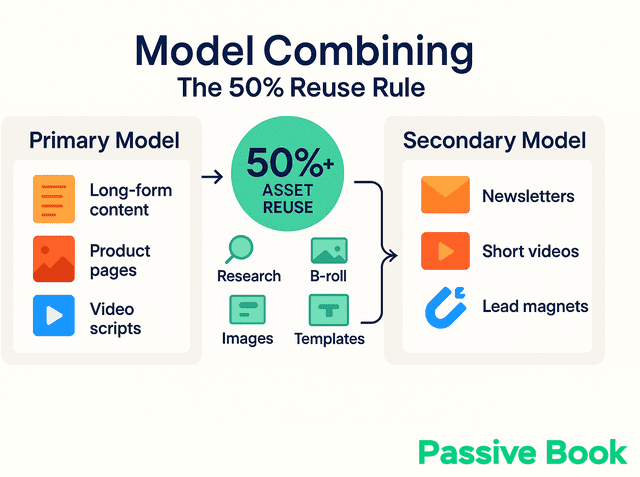
Early creators diversify to 2 to 3 core streams according to Linktree’s creator commerce report, but the key differentiator is asset leverage. A blog post becomes an email newsletter, short video clips, and a lead magnet download with minimal extra work. Your audience overlaps completely because both models serve the same target audience solving the same problems.
Success metrics for combining focus on reuse efficiency and momentum thresholds. You should hit measurable traction in your second model within 60 days if you’re truly leveraging your first. Anything longer suggests you’re building from scratch rather than amplifying what exists.
The shared topic and audience principle eliminates the context switching tax. When your blog covers email marketing and your newsletter teaches the same concepts, you’re deepening expertise rather than fragmenting attention. That focus creates compound growth impossible when running unrelated ventures.
What Success Actually Looks Like
When you successfully combine models, it means your second revenue stream contributes 20 to 40% of total income within 6 to 12 months while consuming less than 30% of your work hours. Based on my decade running combined models, here are realistic benchmarks for different types of combinations.
A blog plus email combination typically generates $500 to $2,000 monthly after 12 months for solopreneurs publishing weekly. Your blog drives discovery through search traffic, while your email list converts at 2 to 5% on digital products offers. This combination works because one piece of long-form content feeds both channels with minimal adaptation time. The upfront investment is minimal-just your domain, hosting, and email platform costs.
An e-commerce store plus TikTok Shop combination adds 15 to 30% to monthly revenue for businesses selling physical products within 90 days. If your online store generates $3,000 monthly, expect TikTok Shop to contribute $450 to $900 once you’ve posted consistently for 8 to 12 weeks. The key metric is video views converting to store visits-target 2 to 4% click-through from video to your main store.
Most combinations fail in the first 90 days. About 60% of solopreneurs abandon their second model before hitting the traction threshold because they launch without the asset reuse plan. The 40% who succeed hit small wins fast-first newsletter subscriber in week 1, first TikTok Shop sale in week 3-which build momentum. You don’t need a large audience to start combining-500 engaged followers is enough.
Your timeline expectations should be: noticeable traction in 60 days (defined in Metrics section), breaking even on time investment in 90 to 120 days, and contributing 20%+ to revenue in 6 to 9 months. Anything slower suggests your models aren’t synergistic. These thresholds represent minimum viable traction-proof your models feed each other rather than exist in isolation.
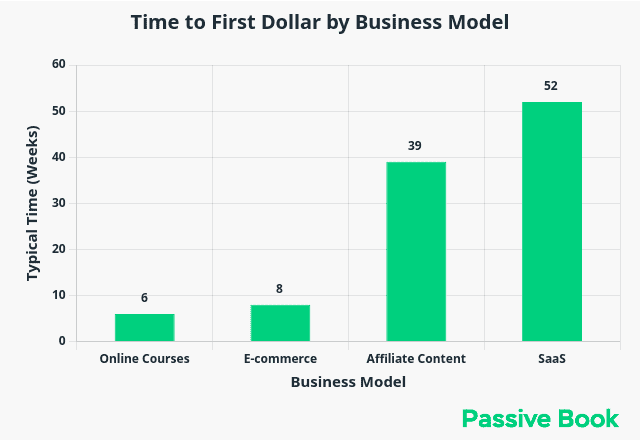
Who Should Combine?
Combining models is designed for solopreneurs who already have one stable publishing channel and can dedicate 5 to 15 hours weekly to expansion. Stable means you’ve shipped content consistently for at least two months and have a baseline audience who engages with your work. This could be 500 blog visitors monthly, 200 email subscribers, or 1,000 social media followers who regularly comment.
This strategy is not for inconsistent publishers still struggling to maintain a single channel. If you’re missing publication deadlines or your audience growth has flatlined for six weeks, fix your core model first. Adding a second revenue stream when the first lacks momentum multiplies your problems rather than your income.
The sequencing rule is non-negotiable: eight weeks of weekly shipping, then add a model that reuses at least 50% of your existing assets. I arrived at this threshold through trial and error-it’s the minimum time needed to establish sustainable workflows. This ensures you’re building on proven content rather than starting from zero.
A YouTuber adding a newsletter reuses video scripts with low cost and minimal upfront investment. A blogger launching a small e-commerce store reuses tutorial content as product descriptions and email sequences. Choose your second model by mapping what you already create. If you write 2,000-word blog posts weekly, an email newsletter requires minimal additional work. If you film product demos for your store, TikTok Shop videos are a natural extension.
2025: AI Overviews and TikTok Shop
The 2025 landscape shifted two critical distribution channels that make combining models more essential than ever. Google’s AI Overviews expanded significantly, which means organic search traffic now gets answered directly on Google without clicking through to your site. This makes owned channels like email lists your most valuable asset for maintaining direct audience relationships.
Social commerce exploded in parallel. TikTok Shop generated $33 billion in GMV globally in 2024, with about $9 billion from US buyers alone. This represents mainstream adoption of buying directly within social platforms rather than clicking out to traditional online stores. Short video content now drives immediate purchase behavior at scale.
Best practice for solopreneurs is diversifying discovery mechanisms while maintaining control. Build content targeting your target audience that ranks in traditional search and feeds AI overviews. Simultaneously grow an email list so algorithm changes don’t erase your audience overnight. Building on multiple digital platforms reduces your risk when any single channel changes its algorithm. If you run an e-commerce business, test TikTok Shop as a secondary sales channel while keeping your primary store as the hub.
The Metrics That Matter section later in this article provides specific thresholds for determining when your combined models are working. The key insight for 2025 is that relying on a single traffic source or platform puts your entire online business at risk when those platforms change their rules or algorithms.
When to Add & How to Check Fit
Add a second model only after you’ve published consistently for eight straight weeks in your primary channel. This isn’t arbitrary. Consistent publishing creates routines that reduce the mental switching costs between different types of work. Research on multitasking shows that frequent context shifts hurt both speed and accuracy, so establishing predictable workflows before expansion protects your productivity.
Eight weeks of weekly shipping proves you can maintain quality under your current constraints. It also generates enough content to identify your repeatable workflows and highest-performing topics. These insights become the foundation for choosing which complementary model will reuse your existing assets most efficiently. Calculate the hours you’ll need to invest weekly before committing to a second model.
Use the thresholds in the Metrics That Matter section to assess readiness objectively. You need evidence that your first model has audience traction before amplifying it through a second. Launching a newsletter to 50 blog readers who barely engage wastes effort that should go toward improving your core content first.
Pick one complementary model and commit to it for 60 days before considering additional expansion. Launching two new models simultaneously multiplies context switching and dilutes the asset reuse advantage. Sequential addition keeps your focus concentrated and your systems manageable within your available 5 to 15 weekly hours.
Winning Business Model Combinations
This section breaks down two high-synergy model combinations with proven results from solopreneur operations. Each combo maximizes asset reuse while serving complementary purposes in your customer acquisition funnel, optimizing both profit margins and lifetime value. Choosing right combinations matters more than how many models you attempt. Both combinations prioritize low cost expansion using platforms you likely already have access to.
Blog Plus Email Flywheel
The blog-to-email combination creates a compounding growth loop where each piece reinforces the other. Your blog posts attract new readers through search and social sharing, then convert them into email subscribers through strategically placed lead magnets. The newsletter nurtures those subscribers with condensed versions of blog content, clips, and exclusive insights while promoting your latest posts back to the blog.
Una Vida Online used email to validate offers before creating full products. This validation loop is the core advantage of combining these models, minimizing overhead costs while maximizing your understanding of customer acquisition patterns. You test topics, offers, and messaging with your most engaged audience before investing significant time in larger content pieces or selling digital products.
The practical workflow converts one weekly blog post into multiple email assets. Write your 1,500-word post on Monday. Extract three key insights for a midweek newsletter on Wednesday. Turn your post into social clips on Friday. Create a lead magnet PDF from your post’s framework once monthly. This reuse strategy keeps you producing across both channels without doubling your hours. The blog-to-email flywheel excels at selling digital products with no inventory or fulfillment complexity.
Target engagement metrics show whether the flywheel is working. Average email open rates range from 20 to 30% across most niches according to Mailchimp’s 2024 benchmarks. Click-through rates should hit 2 to 3% on your campaigns. If you’re hitting these thresholds, your email subscribers are genuinely interested and your topic validation works. Anything below these numbers signals a mismatch between your blog audience and email content.
Store Plus TikTok Shop
Combining a traditional e-commerce store with TikTok Shop creates a powerful discovery and sales channel while maintaining control over your primary customer base. Your main store acts as the hub with full branding, email capture, and customer data. TikTok Shop serves as a satellite sales point reaching buyers who prefer purchasing directly within social apps without leaving the platform.
TikTok Shop can generate significant sales spikes during viral moments (Made by Mitchell hit £1 million in 24 hours) but realistic solopreneur expectations are $200 to $800 monthly after 90 days of consistent posting. The real advantage isn’t viral blowups; it’s how short video demos remove buying friction for visual products. If you sell physical goods, TikTok Shop’s in-app checkout reduces cart abandonment.
Test TikTok Shop by creating 2 to 3 shoppable videos per week using your existing product inventory. Film short demos showing your product solving a specific problem or unboxing experiences with authentic reactions. The key differentiator is demonstrating use cases rather than just featuring products. A 30-second clip showing how your planners help someone organize their week performs better than static product shots. TikTok Shop works especially well for physical products that benefit from visual demonstration.
Build the Loop
A functioning multi-model system operates as a continuous loop where outputs from one model feed directly into the other. Map your cross-feeding workflow explicitly: content creates value that builds your email list, emails promote offers and products, product buyers provide testimonials and case studies, those success stories become your next content pieces. This cycle eliminates dead-end assets that don’t contribute to your broader system. This systematic approach to selling digital products and services creates compounding value from assets you’ve already created.
Batch similar tasks together to minimize context switching between models. If you’re writing blog posts on Monday, draft your newsletter excerpts immediately while the research is fresh. When filming product videos on Saturday, capture extra B-roll for your social clips and TikTok Shop demos.
A practical template for a 6-hour weekly schedule: Monday 90 minutes for writing blog posts or scripts, Wednesday 90 minutes for publishing and formatting across platforms. Friday 60 minutes for email newsletter assembly and sending, Saturday 90 minutes for filming or creating visual content. This structure keeps each session focused on a single type of work.
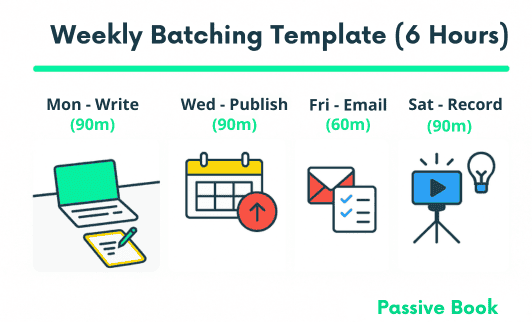
Grouping related work reduces the cognitive load of jumping between completely different activities. Effective digital marketing reuses assets across multiple channels rather than creating unique content for each. Basic project management like time-blocking prevents the chaos of juggling multiple models.
Keep a reuse inventory of your best-performing assets. Maintain at least 10 short clips per product for TikTok, YouTube Shorts, and product page GIFs. Archive your top-performing email subject lines and opening hooks for future campaigns. Save your most-shared blog sections as standalone lead magnets. This inventory becomes your asset library that compounds in value as you create more. Each piece of content should move potential customers closer to a purchase decision.
Metrics That Matter
Tracking the right metrics determines whether your combined models are working synergistically or cannibalizing each other. These benchmarks reveal your profit margins, customer acquisition efficiency, and whether you’re building recurring revenue or one-time transactions. They tell you when to scale, when to fix problems, and when to stop a failing combination before it drains more resources.
Most creators track vanity numbers (followers, likes) while ignoring the 5 metrics that actually predict revenue. I did this for two years before finally tracking what mattered. I track 12 metrics weekly across my combined blog and email business, but only 5 truly predict revenue: email open rate, click rate, unsubscribe rate, net list growth, and conversion rate on my core offer.
Net List Growth & Engagement Depth
Net growth means new subscribers minus unsubscribes. Engagement depth includes replies to your emails, direct messages on social media, and comments on your content. These qualitative signals often predict revenue better than vanity metrics like total follower counts.
Email Open Rate
Email engagement provides the clearest signal of whether your content resonates with subscribers. Target an open rate of at least 20%, with many niches performing between 20 to 30% according to MailerLite‘s 2025 industry benchmarks. Below 15% consistently suggests your content isn’t relevant to your list or your subject lines need improvement.
Email Click-through rates (CTR)
Click-through rates should reach 2 to 3% on campaigns per Mailchimp’s benchmarks. This metric reveals whether your email content drives action beyond just opening. Low opens with high CTR means great content but weak subject lines. High opens with low CTR suggests your emails don’t deliver on the subject line promise.
Unsubscribe Rates
Unsubscribe rates should be below 0.5% according to MediaPost’s 2024 analysis of email behavior. Spikes above this threshold flag relevance problems or excessive sending frequency. A sudden jump in unsubscribes after adding a second model often means you’re promoting too aggressively without balancing educational content.
Conversion Rate
Compare your e-commerce conversion rate to Shopify’s average of about 1.4% according to Littledata’s analysis of thousands of stores. High-performing stores consistently exceed 3.2%, but anything above 1.5% for a solopreneur operation indicates healthy funnel performance. Below 1% signals problems with your product-market fit, pricing, or site experience.
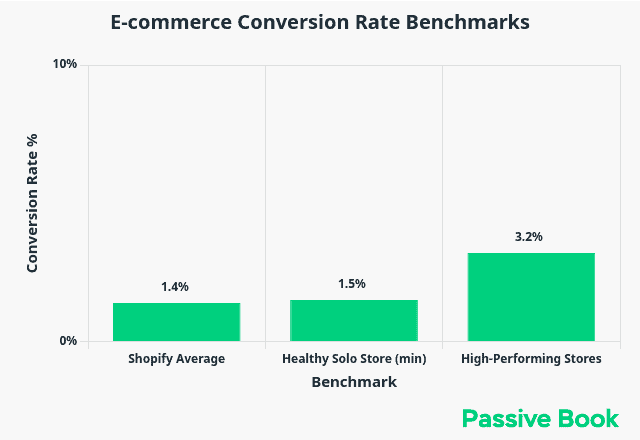
AOV, Refund Rates & CAC
You should track, average order value (AOV), refund rates, and customer acquisition cost (CAC) weekly by channel. AOV tells you if customers are buying multiple items or just single purchases. Refund rates above 5% suggest product quality issues or mismatched customer expectations. CAC helps you understand which traffic sources bring profitable customers versus window shoppers. Track your profit margins by model to identify which combination generates better returns per hour invested.
The critical decision gate is reaching 5 sales OR 200 engaged email subscribers within 60 days of launching your second model. Engaged subscribers means people who open regularly and click through, not just email addresses. This threshold proves your models are feeding each other rather than existing in isolation.
Decision Gates
Use a simple three-part framework for evaluating whether to scale, fix, or stop your multi-model approach.
🟩Go: If your conversion rate exceeds 1.5% and unsubscribe rate stays below 0.5% for two consecutive weeks, increase your output by 25%. This might mean adding a third weekly blog post or an extra product video.
🟨Fix: If your conversion rate falls between 0.5 to 1.5%, hold your current ad spend and output level while improving product pages, gathering more reviews, and testing new creative angles. You have traction but need optimization before scaling. Focus on conversion rate optimization rather than adding more traffic.
🟥Stop: If conversion rates drop below 0.5% and unsubscribe rates exceed 0.5% for two consecutive weeks, pause your second model entirely. This combination isn’t working and continuing wastes your limited time. Return to strengthening your core model or test a different complementary approach after 4 to 6 weeks.
Why Combining Models Often Fails
About 60 to 70% of solopreneurs who attempt combining models abandon their second channel within 90 days based on my observation of 200+ creators in my network. The failures cluster around three predictable patterns, each preventable with the right framework.
Launching two new business models simultaneously multiplies context switching costs instead of leveraging existing assets. The most common failure pattern I’ve observed is solopreneurs trying to start a blog and YouTube channel from scratch at the same time. Both require completely different content creation skills, separate publishing workflows, and distinct audience-building strategies. You end up producing mediocre content for both rather than excelling at one.
Insufficient asset reuse creates the workload of two separate businesses instead of one amplified business. I’ve watched creators build elaborate YouTube videos with custom animations, then try to write completely separate blog posts on different topics for their newsletter. They’re working 20+ hours weekly because nothing transfers between models. The reuse threshold of 50% exists to prevent this trap.
Ignoring the decision gates in the Metrics section leads to sunk-cost fallacy where you keep pouring hours into a failing combination. If your second model hasn’t reached 5 sales or 200 engaged subscribers within 60 days, and your metrics are in the “Stop” zone, that model isn’t complementary to your first. Cutting losses quickly lets you test alternative combinations instead of grinding indefinitely on something that doesn’t work.
Your Next Right Move
Week 1 to 2 should focus entirely on defining your reuse plan before creating any new content. Document exactly which scripts, images, and email templates will work across both your existing and new models. This planning phase prevents the false start of launching a second model that requires completely separate assets. Map your existing content to your proposed second model and confirm you can hit the 50% reuse threshold realistically.
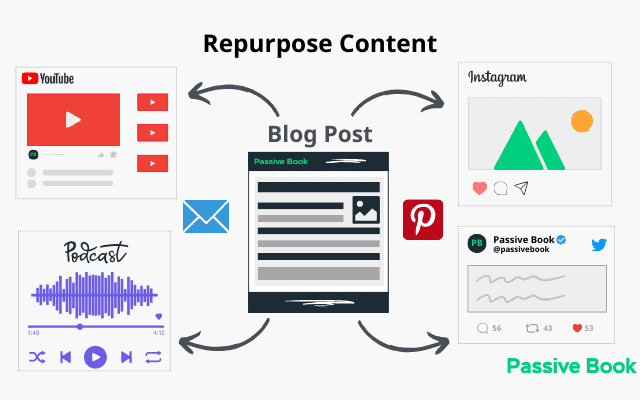
Week 3 to 6 is your soft-launch period where you publish your primary model weekly while testing your secondary model with just one asset per week. If you’re adding a newsletter to your blog, send one email weekly. If you’re adding TikTok Shop to your e-commerce store, post one shoppable video weekly. This gradual ramp lets you build the workflow without overwhelming your available hours.
Week 7 to 8 requires reviewing your metrics against the thresholds in the Metrics That Matter section and making a firm decision to proceed, adjust, or stop. Calculate your conversion rates, engagement percentages, and unsubscribe trends. Use the Go/Fix/Stop framework to determine whether you’re ready to scale output by 25%, need to optimize before growing, or should pause the second model entirely.
For TikTok Shop, affiliate marketing, and any promotional content, include clear disclosures per FTC guidelines. Simple phrases like “Paid partnership with [Brand]” or “#ad” maintain trust with your audience and keep you compliant. Transparency about commercial relationships strengthens rather than weakens your credibility when done consistently. Review each platform’s terms of service before investing time in building presence there. Ensure your website has a privacy policy covering email collection before growing your list.
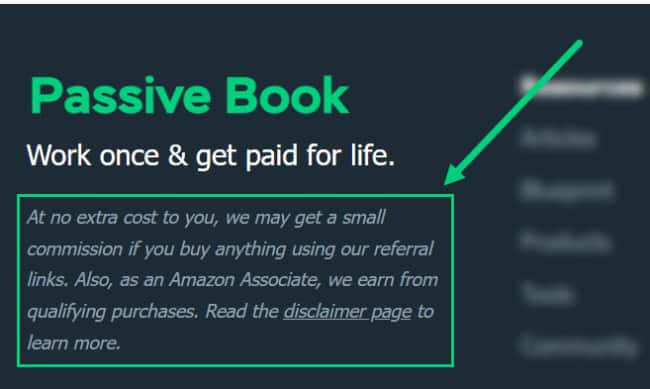
FAQs
When Should I Add a Third Model?
Add a third model only after your first two generate consistent revenue for at least six months and you’ve systematically documented your workflows. Two optimized models beat three mediocre ones every time.
How Many Weekly Hours Do I Need to Add a Model?
You need a minimum of 3 to 5 additional hours weekly if your second model reuses at least 50% of existing assets. This time covers adaptation work like reformatting blog posts for email, editing video clips for social platforms, or creating TikTok demos from existing product footage. Without meaningful asset reuse, expect to dedicate 8 to 12 hours weekly, which puts you outside the sustainable range for most solopreneurs.
What If My Metrics Drop After Adding a Model?
Pause your second model immediately and return to your proven single-channel workflow until metrics recover. Declining performance after adding a model usually means you’re either publishing inconsistently on your core channel or promoting too aggressively without enough educational content. Rebuild your engagement baseline for 4 weeks before attempting a second model launch with better asset integration.
What Next?
You now have a practical framework for combining online business models without burning out or spreading yourself impossibly thin.
Combining models is challenging because it requires discipline to resist the temptation of launching everything at once. The goal isn’t to make money from multiple sources – the solopreneurs who succeed treat their second model as an amplifier of their first, not a separate venture. They batch their work, track their metrics weekly, and make ruthless decisions to cut combinations that don’t work within 60 days.
If this guide helped clarify your next move, share it using the buttons below. What’s the biggest obstacle stopping you from adding a complementary model right now? Share your answer in the comments and let’s troubleshoot it together.
Share this post with your friends & followers:
